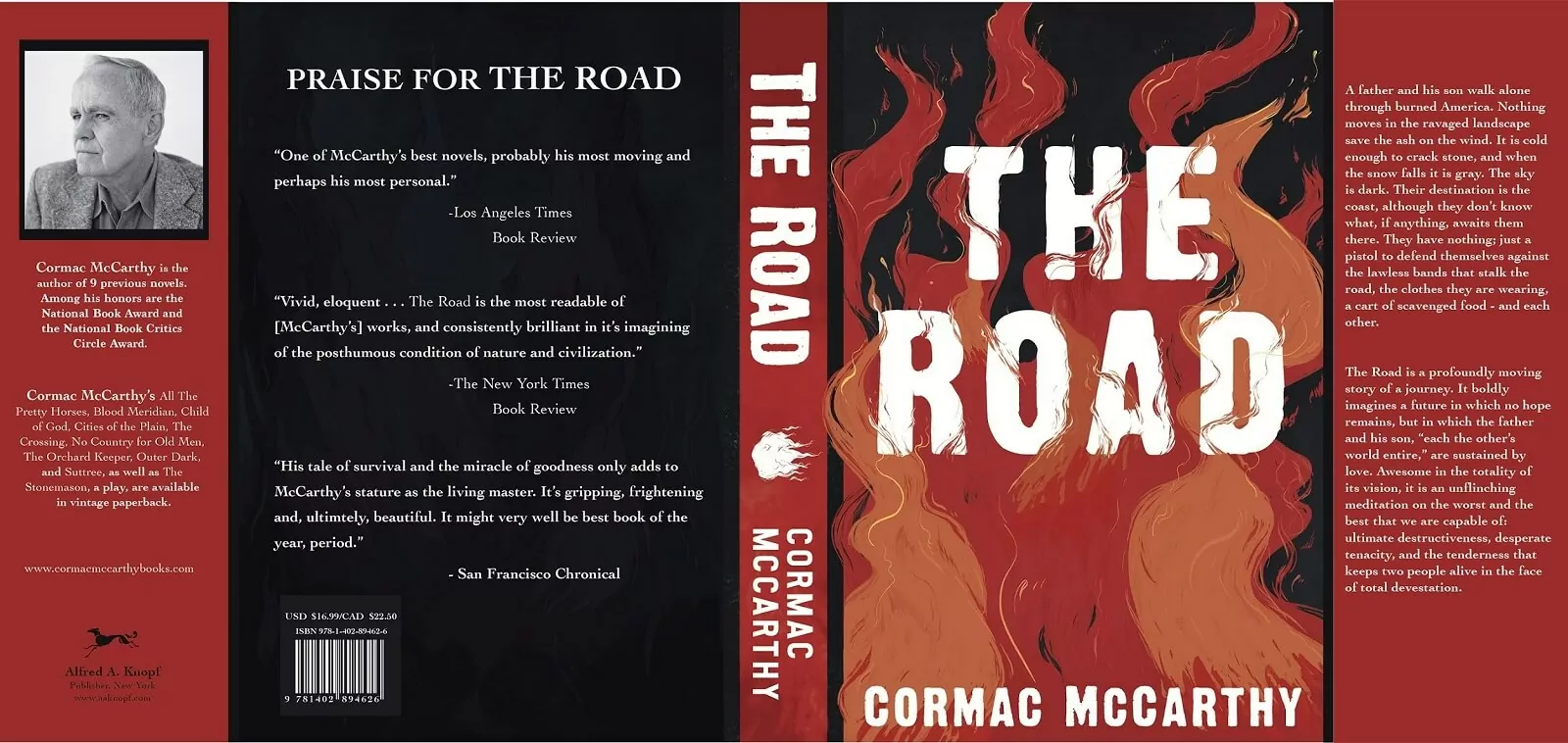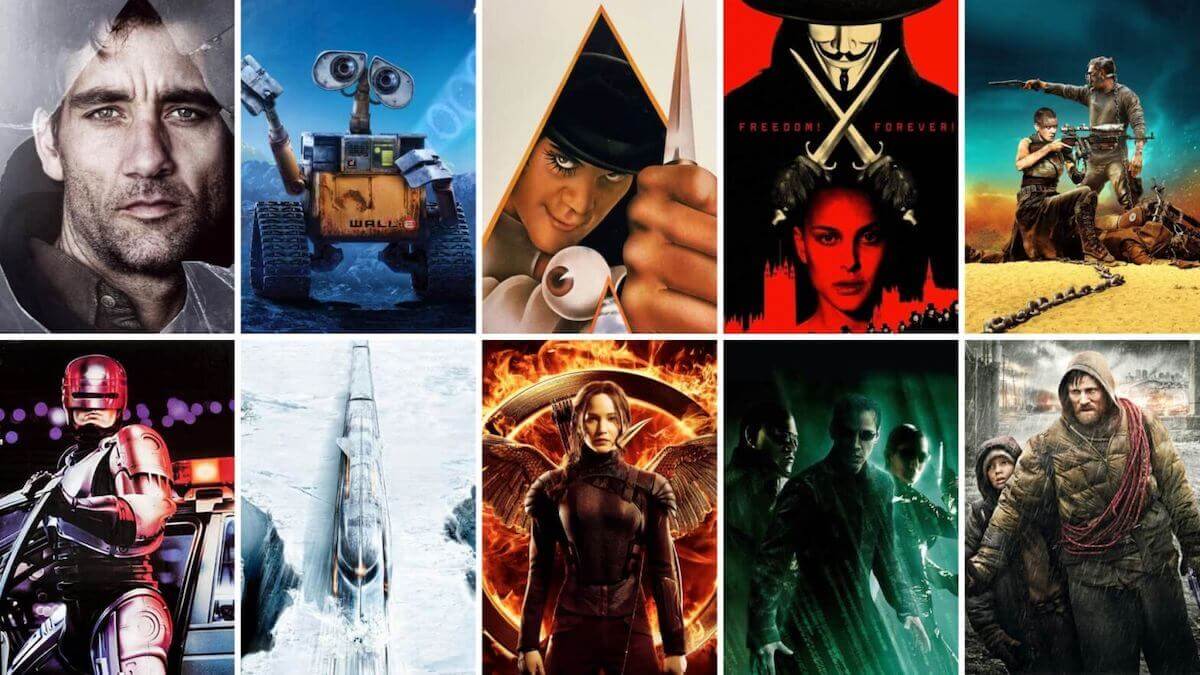From movies to novels to video games, dystopian fiction is consistently one of the hottest genres in entertainment. But given its broad scope and variety of forms, the dystopian genre can sometimes be hard to categorize. What is dystopian fiction? What are its defining features and how can we account for its enduring popularity? This article will define dystopian fiction, explain its purpose and function, and provide important examples of it from across the storytelling spectrum.
Utopian and Dystopian Fiction
First, let’s define Utopia and Dystopia
A Utopia is considered an ideally perfect place, especially in its social, political, and moral aspects. The idea of it is derived from a 1516 book by Sir Thomas More that describes an imaginary ideal society free of poverty and suffering.
Thomas More’s vision of Utopia
More coined the expression “utopia” from Greek words. It literally means “no place,” conveying the idea that no such place could actually exist because it doesn’t reflect the realities of human nature or existence.
Examples of utopia include the mystical “Shangri-la” from the 1933 novel Lost Horizon and the 23rd century Earth depicted in Star Trek.
Is Star Trek a Utopia?
Dystopia is the opposite of utopia: a state in which the conditions of human life are extremely bad as from deprivation or oppression or terror (or all three). A dystopian society is characterized by human misery in the form of squalor, oppression, disease, overcrowding, environmental destruction, or war.
Other real life dystopias include the massive fire destruction in the Western United States due to climate change; and the pandemic raging through authoritarian countries such as India and Brazil.
Dystopian fiction meaning
Characteristics of Dystopian Fiction
DYSTOPIAN FICTION DEFINITION
What is Dystopian Fiction?
The dystopian genre imagines worlds or societies where life is extremely bad because of deprivation or oppression or terror, and human society is characterized by human misery, such as squalor, oppression, disease, overcrowding, environmental destruction, or war.
Dystopian fiction worlds — whether in novels, films, comic books/graphic novels, or video games — tend to contain many of the same narrative features. Common elements of dystopian fiction include societies engaged in forever wars, and characterized by extreme social and economic class divides, mass poverty, environmental devastation, anarchy, and loss of individuality.
What is Dystopian Fiction?
As the video details, social control is another major feature of dystopian fiction. Dystopian authors represent social control as wielded by any number of powerful entities, including:
- Corporate
- Religious/Philosophical
- Technological
- Bureaucratic
- Reproductive
Totalitarianism — defined as total social control over a given population through techniques such as thought police and surveillance — is also a feature of dystopian fiction. It figures prominently in famous dystopian novels such as George Orwell’s 1984, which we investigate further below.
Dystopian speculative fiction
The purpose of Dystopian Fiction
Dystopian fiction is usually set in the near — rather than far — future to generate urgency about real current events. Because dystopian literature and cinema is set in the future, it is by definition science fiction. However, this can also look very different than the best sci-fi movies.
Both science fiction and dystopian fiction belong to the larger category of “speculative” fiction. This type of fiction speculates what might happen to society if humans don’t deal with existential threats such as climate change, nuclear war, over-population, or authoritarianism.
In this video, Margaret Atwood, author of The Handmaid’s Tale, discusses dystopian speculative fiction and her experience writing dystopian fiction:
Margaret Atwood on Speculative Fiction
While not all allegories are dystopias, dystopias are also almost always allegories. Allegories are stories that comment on and criticize contemporary events, people, policies, etc. The purpose of dystopian fiction as allegory is to serve as a warning about how things could go wrong if we don’t change.
Here's one of the most famous allegories — Plato's Allegory of the Cave.
Plato’s Allegory of the Cave
Dystopian fiction examples include allegories about the catastrophic effects of climate change such as Wall-E (2008), and the Roland Emmerich films The Day After Tomorrow (2004) and 2012 (2009).
The Day After Tomorrow • Dystopian Fiction on Screen
To sum up: the dystopian genre typically belongs to the literary and cinematic categories of science fiction, speculative fiction and allegory.
Related Posts
Dystopian Fiction Examples
Dystopian Literature
Dystopian literature is very common and has been around since at least the late 19th century. One of the first dystopian fiction novels is Erewhon (1872) by Samuel Butler, an early commentary on the dangers of artificial intelligence. Another example of early dystopian literature is The Iron Heel (1908) by Jack London, which prophecies the extreme class divides and fascist regimes of the 20th century.
Other famous dystopian novels include:
- Brave New World (1932) - Aldous Huxley
- Fahrenheit 451 (1953) - Ray Bradbury
- Lord of the Flies (1954) - William Golding
- A Clockwork Orange (1962) - Anthony Burgess
- V for Vendetta (1982) - Alan Moore and David Lloyd
- The Handmaid’s Tale (1985) and The Testaments (2019) - Margaret Atwood
- The Children of Men (1992) - P.D. James
- The Road (2006) - Cormac McCarthy
- The Hunger Games series (2008-2010) - Suzanne Collins
Each of these famous dystopian novels has also been made into a movie, showing how popular the genre is with mass audiences. Elements of dystopian fiction translate well into cinema largely because the worlds are so epic and visually striking.

What is a Dystopian Novel?
One of the most famous dystopian fiction examples is George Orwell’s 1984 (1948). Orwell's book imagines what England would be like under extreme fascist or totalitarian rule, such as that of Nazi Germany or The Soviet Union. The video below summarizes the novel and illuminates its dystopian elements, including thought police and loss of individuality.
Dystopian Fiction Novels
1984 has influenced countless dystopian authors since its publication and has become a cultural touchstone, commonly referenced to describe dystopian threats to the real world. One famous example of its influence is Ridley Scott’s famous Apple commercial, which aired during the 1984 Super Bowl.
Elements of Dystopian Fiction
In the ad, Apple Macintosh is portrayed as the revolutionary brand bursting through the rigid constraints of the thought police.
Dystopian Fiction definition and examples
Utopian and Dystopian Fiction
It may seem counterintuitive, but utopian fiction is really often just dystopian fiction. In other words, such stories may present utopian worlds on the surface — societies free of war, poverty, and environmental decay.
But these utopias are usually portrayed as resulting from class exploitation, and/or the loss of individual liberties such as free expression and reproductive rights, giving them many shared characteristics of dystopian fiction.
Examples include H.G Wells’ novel The Time Machine (1895), in which a future Utopian world is powered by the underground slave community. Or consider the world of the film Pleasantville (1998) in which a perfect society can only exist because of bland conformity.
Utopian and Dystopian Fiction • Pleasantville
Wall-E features both a traditional dystopia and utopia. On Earth, environmental devastation has rendered unfit for human inhabitation. This is paired with a nominal “utopia” on the galactic cruise ship where humans now live. Supposedly all human needs are provided for in this utopia, but people lack access to the kinds of experiences that would make them fully human.
Utopia/Dystopia in Wall-E
Filmed Dystopian Fiction Examples
Dystopia examples in Film and TV
Dystopian speculative fiction continues to be among the most popular types of science fiction not only in literature, but also in film and television. But what does dystopian fiction mean to so many people? Why is it so popular?
One reason is that dystopian fiction is a form of prophecy. We are fascinated and terrified by our possible futures and what might become of us, especially because of a general perception that things are getting worse, that we are edging towards real life dystopia
Famous dystopian examples in cinema include:
- A Clockwork Orange (1971) - Stanley Kubrick
- The Mad Max series - (1979 - present) - George Miller
- Escape from New York - (1981) - John Carpenter
- The Terminator (1984) - James Cameron
- Brazil (1985) - Terry Gilliam
- Robocop (1987) - Paul Verhoeven
- 12 Monkeys (1995) - Terry Gilliam
- The Matrix series (1999 - present) - The Wachowskis
- Minority Report (2002) - Steven Spielberg
- A Scanner Darkly (2006) - Richard Linklater
- Children of Men (2006) - Alfonso Cuarón
- The Book of Eli (2010) - The Hughes Brothers
- Snowpiercer (2013) - Bong Joon-Ho
- The Divergent series (2014-2016) - Various
Dystopian Science Fiction Films
Conversely, dystopian fiction examples can also be comforting, because we can become pleasurably involved in a compelling story world while recognizing that our world is not yet as awful as the one presented on screen. We can come away from a dystopian film or TV show feeling like there is still hope for change in our own world.
Current and recent TV shows featuring dystopias include:
- The Handmaid’s Tale
- Years and Years
- The Walking Dead and Fear the Walking Dead
- The 100
- Westworld
- The Society
- The Capture
- Altered Carbon
- The Man in The High Castle
- Black Mirror
Dystopian TV Shows
Features of Dystopian Fiction
Visualizing dystopia in film
Dystopian science fiction films rely heavily on elaborate special effects and mise-en-scene to create their futuristic worlds.
Mise-en-scene elements:
- Set design
- Lighting
- Costumes
- Make-up
- Props
- Cast
- Shot composition
The seminal cyberpunk movie dystopia Blade Runner (1982, dir. Ridley Scott) is famous for its mise-en-scene, cinematography and visual effects. All of which have been hugely influential on dystopian fiction books, TV, video games, and graphic novels.
Blade Runner features many typical characteristics of dystopian fiction such as environmental devastation, authoritarianism, and corporate control.
Dystopian science fiction films
Blade Runner 2049 (set 30 years after the original) expands the mise-en-scene of the original, using more sophisticated special effects to present a larger world more fully in the grip of dystopia.
A monolithic corporate structure dwarfs regular skyscrapers. A dirty bomb has turned Las Vegas into a glowing orange ghost town. And the city formerly known as San Diego is now a gigantic garbage dump.
New Dystopian Fiction
The dystopian vision of Blade Runner has influenced many video games, including CyberPunk 2077, which owes much of its look and feel to Ridley Scott’s movie.
The dystopian genre extends to video games • Cyberpunk 2077
The visual aesthetic of the Blade Runner movies’ dystopian landscape has become so prevalent in culture that it’s not uncommon for real life dystopian visions to be compared to it. Take this video of San Francisco being affected by wildfire and the eerie similarities to Blade Runner.
San Francisco skies go full Blade Runner
Related Posts
UP NEXT
Sci-Fi movies featuring dystopias
In reviewing features of dystopian fiction, we have established that dystopian fiction is a subgenre of science fiction. Next, let’s discover famous dystopian fiction examples within science fiction cinema by looking at a list of important science fiction films. Take a look at features of dystopian fiction in the larger context of sci-fi now.
